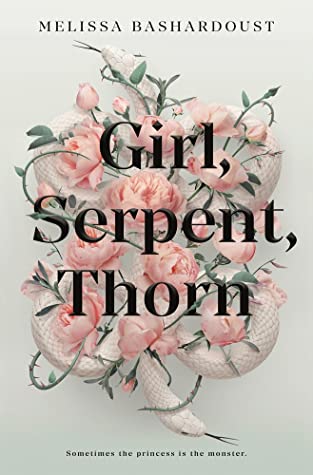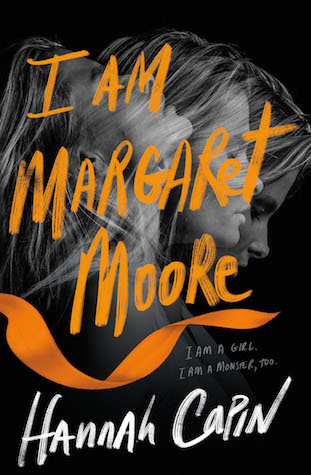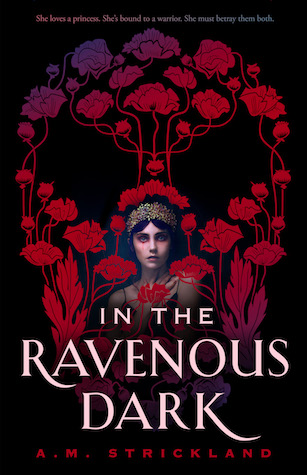
TL;W[on’t]R[ead the review]: YAAAAAYYYY Real Monsters.
Content warnings: death, murder, bodily transformation, abduction
Summary [courtesy of Goodreads]: There was and there was not, as all stories begin, a princess cursed to be poisonous to the touch. But for Soraya, who has lived her life hidden away, apart from her family, safe only in her gardens, it’s not just a story. As the day of her twin brother’s wedding approaches, Soraya must decide if she’s willing to step outside of the shadows for the first time. Below in the dungeon is a demon who holds knowledge that she craves, the answer to her freedom. And above is a young man who isn’t afraid of her, whose eyes linger not with fear, but with an understanding of who she is beneath the poison. Soraya thought she knew her place in the world, but when her choices lead to consequences she never imagined, she begins to question who she is and who she is becoming…human or demon. Princess or monster.
I’m not usually a fan of fairy-tale retellings, but this book grabbed me from page one. And unlike so many books I will rant about on here, it stuck the landing too, pulling off a near-perfect ending that affirmed a pro-anger ethos that’s so crucial to see these days. So, yay!
This book had gorgeous writing and engaging characters, but for me the reason it stands out is because of its use of ancient and more modern Persian belief systems and mythologies. At the back of the book, Bashardoust even includes a pretty great author’s note detailing the origins of many of the names, festivals, monsters, and overall cosmology of her fantasy world. I was also struck by the nuanced way she dealt with monstrosity in general; the novel’s tagline (“Sometimes the princess is the monster.”) holds more weight than it could have.
SPOILER TERRITORY
As I said above, fairy tale elements don’t usually hook me into stories, so I won’t go too in-depth here about the way this book plays with Sleeping Beauty and a host of other non-Western narratives. It’s very well done, and Bashardoust’s writing really fits in well with the whole “there was and there was not” old-fashioned tone, while still sounding modern enough to keep me immersed.
I was thrilled to see the sapphic relationship arise between main character and cursed princess Soraya and Parvaneh, the winged parik div (demon) who is initially held captive by Soraya’s brother. It’s developed very well, in my opinion, and the scene where touch-starved Soraya caresses Parvaneh’s wings while healing them, falling in love in the process, was so sensually charged. Their escalating touches were so tenderly rendered, while keeping a slight erotic edge, and I can see why some reviewers wanted more scenes featuring the pair’s growing intimacy (particularly given how much of the plot must, by necessity, focus on Soraya’s relationship with the villainous, manipulative Shahmar).
Speaking of the Shahmar, I didn’t particularly predict the mid-point twist when Azad reveals himself to be the legendary human/div hybrid and deposed shah, though I suppose I should have. I was concerned at this point that Bashardoust would take the book in a more traditional direction vis-a-vis Soraya’s anger and temptation to violence, since previously her most violent acts had been affirmed only by Azad. I assumed the plot would take on a corrective arc, further shaming Soraya for her explosions of rage. However, I was more than pleasantly surprised.
Soraya’s poison curse, which is linked repeatedly to her internal battle between shame and empowered anger, is posed as a strength not only by the Shahmar but by her ‘true’ love interest Parvaneh as well. During an early encounter, the parik says she finds Soraya’s anger beautiful, which is a fascinating way to think about it. And after a crisis of conscience prompted by Soraya’s inadvertent betrayal of her family and betrayal BY Azad-Shahmar, an even more powerful parik counsels her about her anger: “You say you’ve been angry, that you’ve hurt others, that you’ve become something violent like him…Very well, then. Be angry. Be violent. But not for his sake. Not to do as he commands. Be angry for yourself. Use that rage to fight him…Keep that anger close to you, nourish it like a flame, and when the time is right, fight him however you can.”
These powerful, monstrous femmes repeatedly teach Soraya what her own human society refuses to: that her anger IS power, and that her anger can be used as a tool (even after her poison curse is reversed) to enact her will against her oppressors.
In the midst of this awakening, Soraya comes to a strange understanding with other div, even as the Shahmar is trying to force them to respect her as his coerced-bride-to-be. The div are truly demons, birthed from a pit from the Destroyer themself, and they are drawn to violence in all its forms. In one truly fascinating scene, instead of accepting the obeisance the Shahmar forces them to enact for her, Soraya descends (Daenerys-Targaryn-style, but without the white savior vibes) into their midst and allows them to lightly claw at her, ripping her dress and plucking strands of her hair, until her suitor intervenes. Describing the scene, one powerful div later calls it “rapturous,” implying that the div are much more interested in her than they are in the deluded, power-hungry Shahmar. The div muses, “There’s something restless growing within you. We’re all curious to see what happens when it breaks free.”
And when it does break free, oh boy. I LOVED the climax of this book, from its execution to its messaging, and it certainly makes good on the divs’ collective anticipation. Condemned to play out her traitor’s role and execute her brother to save the rest of her family, Soraya bathes in the ancient div blood (crusted on an old baby blanket) that originally brought the “curse” of the poison touch on her. Initially, the spell doesn’t seem to work, but at a crucial moment she stands transformed, along with her beloved rose garden where she poured the bathwater, a monster of thorns and poison veins. Except this time, crucially, she can control the poison and how she directs her thorns.
And this transformation is written not as body horror or tragedy, but as rapturous apotheosis: “Soraya felt the poison inside her. She welcomed it like a friend, like a savior…instead of feeling horrified by the change that had come over her, Soraya felt whole.”
She uses her new embodiment to stop Azad, though the final act of killing the now-human Shahmar falls to her mother after Soraya hesitates at the last minute. So we get one final act of schooling–crucially by another woman–in order for Soraya to fully understand the necessity of anger and directed violence. But her ultimate role is not just one of destruction: Soraya emerges as a protector of her people, and as a monster the div will listen to. Her transformation ensures the safety of her people, even if they are initially reluctant to accept her.
More than this, though, Soraya is accepted completely and whole-heartedly by the people who truly matter to her: her mother, whom she could not touch for almost all her life, affirms her new form with “amazement,” saying “It suits you.” And her lover Parvaneh is truly delighted. Soraya exults, “She had thought nothing would be more incredible than the simple sensation of touch, but she’d been wrong; more incredible still was the idea that she could be dangerous, all her thorns on display, and that someone would dare to touch her anyway.” Who says you can’t have it all, particularly in fantasy?
At the very end, Soraya gets one last chance to resume a fully human guise, cut off from all the power that the div blood and her own gumption have created for her. The powerful simorgh (another embodiment of female power) offers her a rare feather to “cure” herself, but she immediately rejects this offer. I LOVED how Bashardoust inserted this scene, ensuring the reader had no doubt that this ending is a CHOICE, not just bad luck, for her main character.
“She had spent so many years hiding away, trying to bury her emotions and all the poison that came with them, that now it was a relief to wear her thorns proudly, without shame or apology….Her thorns deprived her of nothing–and in return, they gave her a place and a purpose in the world, her existence undeniable.”
So Soraya may indeed get to live happily ever after, reconciled with her family and travelling with her new found family, the parik.
She’s at peace, and while she stands revealed as a monster, not only is that not a BAD thing, it’s an EXQUISITE thing.


